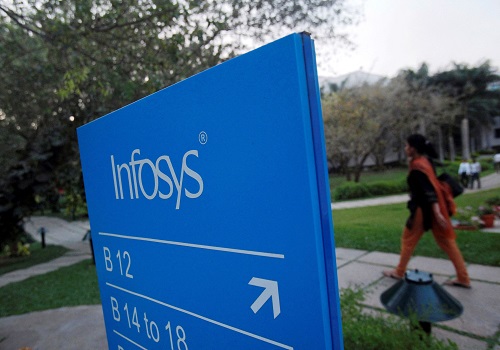CPO Demand Supply Price Trend Analysis Report – 10 Jan 2022 by Origo Commodities India Pvt. Ltd

Follow us Now on Telegram ! Get daily 10 - 12 important updates on Business, Finance and Investment. Join our Telegram Channel
Overview
BOILING PRICES OF CRUDE PALM OIL WILL CONTINUE TO HEAT HIGHER ON OUTPUT CONCERNS AND LOWER DECEMBER STOCKS
Crude Palm Oil (CPO) prices in Malaysian Bursa Malaysia Derivate, known as BMD, exchange have surged by about galloping 16.3% since 20 December 2020 and by 6.3% last week on account of output concerns caused by recent floods there that have caused damages to the major plantations.
Further, firm Soybean and Soybean oil CBOT prices are adding additional fuel to the ongoing rally in the CPO. Soybean CBOT March future prices have risen to a 41⁄4- month high of $14.02/bushel last week on likely lower Brazilian soybean production caused by the drought that in turn has upped the concerns of decline in the global oilseed output and ending stocks this crop year. CPO Kandla has gained by 1.5% last week while CPO C&F Mumbai and RBD Palmolien C&F Mumbai have jumped by 3.66% and 2.65% respectively same week. Prices of domestic CPO are supported by the strong firm trend in the Malaysian palm oil prices and rally in the soybean and soybean oil. As we all know that India is the importer of Crude palm oil in the world and a gets substantial part of it from Malaysia that’s why prices of domestic CPO take cues from BMD Malaysia.
Key Factors
* CPO BMD prices are likely to trade Strong: CPO BMD prices are expected to stay strong in the coming fortnight mainly underpinned by the soaring fears of a drop in output of the commodity caused by the recent floods in Malaysia. Tight supply will usually mean higher prices.
* CPO Production will stay tight in Q1,2022: though the official Number for December will be released today, it is expected that Malaysia’s December output will fall by 8.1% on month to 1.5 million tonnes, as per the CIMB survey while production is likely to drop by 9.8% to 1.47mt as per Bloomberg. Also, production is likely to stay tight in the first three months of 2022 as these months are typically low production seasons for the commodity. Moreover, Malaysia is still having flooding risks and labor shortage issues.
* Malaysia Palm oil stocks are likely to fall by 6.6% to a 5-month low in December 2021: Malaysian Palm oil stocks are likely to drop to a 5-month low of 1.7 million tonnes, 6.6% down on month from November’s position of 1.82 million tonnes.
* Soft Malaysian December exports: Private cargo surveyor AMSPEC Agri reported that Malaysia’s CPO exports for the December 01 to December 25 period plunged by 31.5% to 331,050 tonnes, against 483,894 tonnes in the same period last month. According to ITS (Intertek Testing Services), Malaysia’s 1-25 December palm oil exports fell by 2.56 percent to 1,306,408 Tons compared to 1,340,778 tonnes last month for the same timeframe. Deteriorating production outlook offsetting the fall in the exports.
* Higher Soybean and Soybean Oil prices will add further spark: Prices of Soybean have gained by about 15% since December 01, 2021, and by 5.3% this year so far. Soybean Oil CBOT March future has also shown a double-digit jump of 10% since December 15, 2021, tracking the firm undertone of Soybean. Further upside in these two commodities will give another support to the strong CPO prices.
* WTI Crude oil prices rose to a 7-week high on supply outages in Libya and the unrest in Kazakhstan: WTI crude oil prices once again have reclaimed the $80 per barrel mark last week despite OPEC+ decision to boost its crude oil production by another 4,00,000bpd in February in line with expectations, with this OPEC will add 1.6mbdp supply to the global market. Output from Libya has fallen by 200,000 bpd to about 700,000bpd, the lowest in 12- month and sharply down from a year-ago level of about 1.3mbdp. There is a report of reduced production at Kazakhstan’s top oilfield Tengiz. Both events are neutralizing the efforts of OPEC+.
* The government of India has recently cut the basic import duty on RBD (refined, bleached and deodorised) palmolien from 17.5% to 12.5%. Now, net effective duty stands 13.75 versus 19.25%, this step will encourage higher import of RBD oil, which in turn will ease the price pressure. But soaring prices in Malaysia will neutralize price cut benefit for sure.
* The spread of the Omicron variant of Covid-19 is the factor to watch for especially in major consuming countries. But as of now, it has not impacted the prices but we need to have a check on daily cases as it might dim the demand for the short-term.
* India will likely import 8.6 million tonnes (mt) of palm oil during the November 2021-October 2022 season, up 3,00,000 tonnes from previous estimates, according to the United States Department of Agriculture (USDA).
To Read Complete Report & Disclaimer Click Here
Please refer disclaimer at https://www.origoindia.com/
Views express by all participants are for information & academic purpose only. Kindly read disclaimer before referring below views. Click Here For Disclaimer












 320-x-100_uti_gold.jpg" alt="Advertisement">
320-x-100_uti_gold.jpg" alt="Advertisement">












